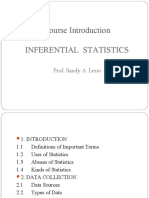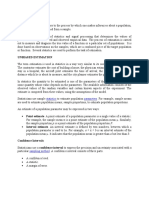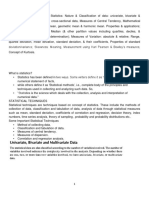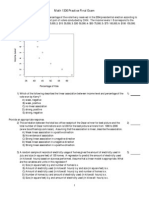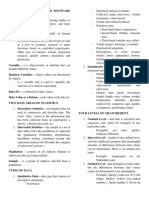100% found this document useful (1 vote)
716 views35 pagesIntroduction To Statistics and Data Presentation
This document provides an introduction to statistics and data presentation. It discusses that statistics is the science of handling data and includes descriptive and inferential statistics. There are different levels of measurement for data and preliminary steps in statistical studies include defining the problem and determining the population. The document also outlines guidelines for selecting a research problem, types of questions, sampling techniques, and methods for collecting and presenting data through text, tables, and various graphs.
Uploaded by
Robert Troy Romanillos VillaflorCopyright
© © All Rights Reserved
We take content rights seriously. If you suspect this is your content, claim it here.
Available Formats
Download as PPTX, PDF, TXT or read online on Scribd
100% found this document useful (1 vote)
716 views35 pagesIntroduction To Statistics and Data Presentation
This document provides an introduction to statistics and data presentation. It discusses that statistics is the science of handling data and includes descriptive and inferential statistics. There are different levels of measurement for data and preliminary steps in statistical studies include defining the problem and determining the population. The document also outlines guidelines for selecting a research problem, types of questions, sampling techniques, and methods for collecting and presenting data through text, tables, and various graphs.
Uploaded by
Robert Troy Romanillos VillaflorCopyright
© © All Rights Reserved
We take content rights seriously. If you suspect this is your content, claim it here.
Available Formats
Download as PPTX, PDF, TXT or read online on Scribd
/ 35






















